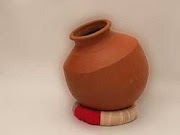Carnatic Classical Music
History of Carnatic Classical Music
Carnatic Classical Music or Carnatic Sangeet is the south Indian system of music. It has a rich history and a very sophisticated theoretical system.
We can start our discussion of the history of Carnatic Sangeet with Purandardas (1480-1564). Purandardas is considered as the father of Carnatic Sangeet. He is given acknowledgment for the codification of the technique for education, and is likewise credited with several thousand melodies.
Venkat Mukhi Swami (seventeenth century) is the fantastic scholar of Carnatic music. He was the person who developed the melakarta system. melakarta is the system for classifying south Indian ragas.
Carnatic music truly acquired its present structure in the eighteenth century. It was the period of Carnatic music when Thyagaraja, Shamashastri, and Muthuswami Dikshitar composed their famous creations. Beside those, Various other musicians and composers improved this tradition. Name of some famous personalities worth mention are Gopala Krishna Bharati, Narayan Tirtha, Papanasam Shivan, Swati Tirunal, Annamacharya, Mysore Vasudevachar, Uttukadu Venkatasubbair and Arunagiri Nathar,
Theory of Carnatic Music
Carnatic music has a profoundly developed theoretical system. It depends on a complex system of ragam (raga) and thalam (tal). These describe the intricacies of the melodic and rhythmic frames respectively.
The melodic establishment is the ragam (raga) which is basically the scale. The seven notes of the scale are Sa Re Ga Ma Pa Dha and Ni. However, unlike a basic scale there are certain melodic restrictions and obligations. Each ragam (raga) has a particular way that it moves from one note to another.
The ragams are ordered into various modes. These are referred to as mela, and there are 72 mela in Carnatic sangeet. The mela are conceptually similar to the that is of North Indian music. There is however, a significant contrast. South Indian scales permit chromatic structures that are not allowed in Hindustani sangeet. For instance it is perfectly acceptable for the initial three notes (i.e., Sa Re Ga to all be approximately one semitone separated. It is these permissible structures which permit there to be so numerous mela.
The tal (thalam) is the rhythmic foundation to the system. The south Indian tals are defined by a system of clapping and waving, while this is significantly less important in the north. North Indian musicians characterize their tals by their theka.




0 Comments